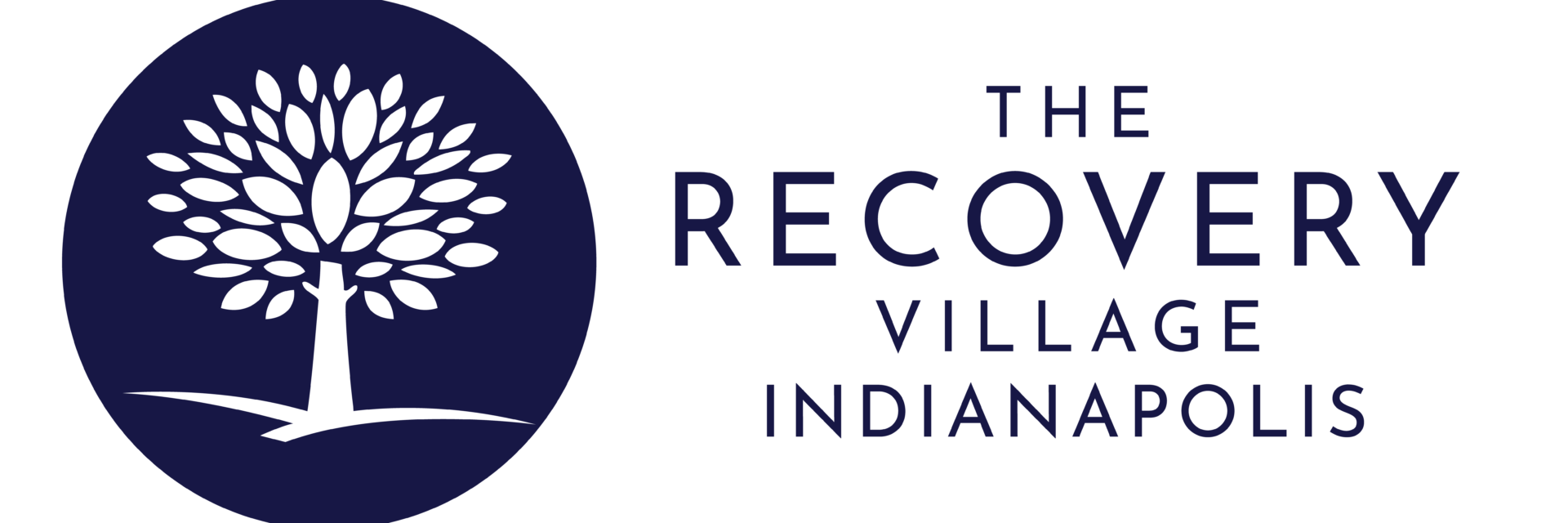Spotting Opioid Addiction Signs and Finding Treatment
Written by The Recovery Village Indianapolis
& Medically Reviewed by Dr. Kevin Wandler, MD
Medically Reviewed
Last updated: 07/22/2024
Key Takeaway
- Opioids are effective for severe pain but have a high risk of addiction and overdose.
- Physical signs of opioid addiction include weight fluctuations, skin marks, drowsiness and withdrawal symptoms.
- Opioid addiction can disrupt sleep patterns, affecting REM and non-REM stages, leading to insomnia and poor sleep quality.
- Behavioral changes in opioid addiction include social isolation, secrecy, financial difficulties and risky behaviors.
- Social isolation can exacerbate opioid addiction, increasing substance use and further isolation.
- Increased secrecy about opioid use is a red flag for addiction, leading to isolation and financial concealment.
- Psychological indicators of opioid addiction include mood swings, anxiety, depression and intense cravings.
- Effective treatment for opioid addiction includes medications, behavioral therapies and support to prevent relapse.
What are Opioids?
Opioids are a class of drugs that include both natural and synthetic substances capable of interacting with nerve cells to alleviate pain. These drugs range from prescription medications, such as morphine and oxycodone, to illicit substances like heroin. The Centers for Disease Control and Prevention (CDC) notes that opioids can be extremely effective for treating severe pain, particularly in cases like advanced cancer pain. However, opioids also carry a high risk of addiction and overdose, especially with prolonged use or misuse.
Effects of Opioids
According to Mayo Clinic, opioids work by binding to opioid receptors in the brain, spinal cord and other areas of the body, reducing the perception of pain and producing feelings of euphoria. This can lead to psychological dependence. The Cleveland Clinic further explains that common side effects of opioids include drowsiness, confusion, nausea and constipation, while long-term use can lead to tolerance, physical dependence and an increased risk of respiratory depression and death.
The Physical Signs of Opioid Addiction
Opioid addiction, a severe substance use disorder, manifests through various physical signs that can alert individuals to the need for intervention. Recognizing these signs is crucial for early detection and treatment. Opioid addiction can lead to noticeable changes in a person’s health and appearance, which may include sudden weight fluctuations, deterioration in personal grooming and unusual marks on the skin indicative of intravenous drug use.
Physical dependence on opioids is often accompanied by symptoms such as drowsiness, slurred speech and constricted pupils. In more severe cases, individuals may exhibit signs of withdrawal when not using the drug, which can include agitation, muscle aches and gastrointestinal distress.
Another critical aspect to consider is the risk of overdose, which can present as slowed breathing, loss of consciousness, or even death. It is essential to seek medical help immediately if an overdose is suspected.
Sleep Disturbances
Opioid addiction can significantly disrupt normal sleep patterns, which is a critical aspect of overall health and well-being. Research indicates that opioid use can lead to changes in the architecture and quality of sleep, including alterations in the rapid eye movement (REM) and non-REM stages. This disruption can manifest as insomnia, frequent awakenings, or decrease in the restorative stages of sleep, which are crucial for cognitive function and physical health.
Moreover, opioids can affect the brain’s sleep-wake cycle by altering the production of neurotransmitters that regulate sleep. The presence of opioids in the system can suppress the natural production of these neurotransmitters, leading to an imbalance that affects the ability to fall and stay asleep. Studies have shown that these sleep disturbances may exacerbate the cycle of addiction, as individuals may use opioids to self-medicate for sleep problems, which in turn can worsen sleep quality.
Weight Gain
Changes in weight are often a visible sign of substance misuse and can be attributed to a variety of factors associated with opioid use. The disruption of normal metabolic processes, changes in diet and shifts in lifestyle that accompany addiction can all contribute to these weight fluctuations.
Weight loss in opioid addiction may occur due to a decrease in appetite, neglect of nutritional needs, or a preoccupation with drug use over self-care. On the other hand, weight gain might be a result of slowed metabolism or the use of opioids as a coping mechanism for emotional distress, leading to overeating. It’s important to recognize that both weight loss and gain can be symptoms of underlying health issues exacerbated by opioid misuse, such as depression or anxiety, which may also need to be addressed in treatment.
The Behavioral Signs of Opioid Addiction
Opioid addiction manifests through various behavioral changes that can signal an individual’s struggle with the substance. Recognizing these signs is crucial for early intervention and effective treatment. There may be an excessive amount of time spent obtaining, using, or recovering from the drug, often at the expense of work, school, or family responsibilities.
The compulsion to use opioids despite the negative consequences is a hallmark of addiction, often leading to risky behaviors such as driving under the influence or engaging in illegal activities to obtain the drug. It’s important to approach individuals with compassion and understanding, encouraging them to seek help.
Social Isolation
For individuals dealing with opioid addiction, social isolation may manifest as withdrawal from social activities, a lack of interest in previously enjoyed hobbies and an overall reduction in engaging with family and friends. This withdrawal can create a dangerous feedback loop, where isolation leads to increased substance use, which in turn leads to further isolation.
Research indicates that social isolation can lead to severe health risks, including a 50% increased risk of dementia, a 29% higher risk of heart disease and a 32% greater likelihood of experiencing a stroke. Addressing social isolation is a critical component of comprehensive treatment for opioid addiction, as fostering social connections can provide support, reduce stress and enhance the effectiveness of recovery efforts.
Increased Secrecy
Secrecy is a common behavioral change observed in individuals who are struggling with opioid addiction. This can manifest in various behaviors that are designed to conceal the extent of their addiction and to facilitate continued opioid use. Increased secrecy can be a red flag, indicating that an individual may be developing or has already developed a dependency on opioids.
- Individuals may begin to isolate themselves, avoiding social interactions to hide physical signs of use or withdrawal symptoms.
- They might change their routines or habits suddenly, such as taking frequent, unexplained trips or locking doors to rooms they previously left open.
- There may be an increased protectiveness over personal space or belongings, where they store their opioids.
- Financial secrecy can also be a sign, with unexplained expenses or missing funds, as the cost of maintaining the addiction grows.
Recognizing these signs of secrecy is vital for early intervention and can lead to a better outcome for the individual. The Recovery Village provides comprehensive treatment options for those struggling with opioid addiction, focusing on both the physical and psychological aspects of recovery.
The Psychological Signs of Opioid Addiction
Common psychological signs of opioid addiction include a problematic pattern of opioid use that leads to distress or impairment, with at least two of the following symptoms occurring within a 12-month period: intense cravings for opioids, increased tolerance, withdrawal symptoms and continued use despite problems caused by opioids.
These criteria, outlined in the Diagnostic and Statistical Manual of Mental Disorders (DSM-5), help professionals diagnose opioid use disorder (OUD). The symptoms can be as debilitating as the physical dependency, often leading to a vicious cycle of increased opioid use as a misguided attempt to self-medicate.
Recognizing these psychological signs is crucial for early intervention and treatment. If you or someone you know is exhibiting these symptoms, it is essential to seek professional help. The Substance Abuse and Mental Health Services Administration (SAMHSA) provides resources and a National Helpline (800-662-HELP) for treatment referrals and information.
Mood Swings
Mood swings are notable, rapid changes in emotional state and are often a symptom of various mental health conditions, including opioid addiction. These fluctuations can be so intense that they disrupt daily life and relationships. In the context of opioid addiction, mood swings may stem from the drug’s impact on brain chemistry, leading to alterations in mood regulation.
When individuals experience mood swings due to opioid addiction, they may display symptoms similar to those of bipolar disorder, such as periods of emotional highs and lows. During these times, individuals may exhibit manic behaviors, like increased energy or irritability, followed by depressive episodes characterized by sadness or hopelessness.
Increased Anxiety or Depression
The intertwining of opioid addiction with mental health disorders, specifically anxiety and depression, is a critical concern. According to a global study published in The Lancet, these conditions have seen a significant increase in prevalence, with an emphasis on the social and economic factors contributing to this rise.
Furthermore, the CDC reports an escalation in anxiety and depression severity scores in the United States, correlating with the COVID-19 pandemic’s impact. This uptick in mental health issues coincides with the ongoing drug epidemic, suggesting a potential link between increased substance abuse and the deterioration of mental health.
The Daily Struggles of Opioid Addiction
Opioid addiction is a pervasive issue that significantly disrupts an individual’s daily life, affecting their health, relationships and socio-economic status. It can lead to a decline in physical health, marked by symptoms such as changes in sleep patterns, weight fluctuations and increased risk of infectious diseases. It can also impact mental health, contributing to heightened anxiety, depression and mood swings.
Moreover, the American Psychiatric Association notes that individuals with OUD may prioritize drug use over other activities, leading to neglect of responsibilities and hobbies. The risk of injury or death from accidents is elevated and the disorder can also affect pregnant women and newborns, with potential for serious health consequences for both.
Treatment Options for Opioid Addiction Recovery
Opioid addiction requires a comprehensive treatment approach. Recovery is attainable with the right resources and treatment strategies. Key components of effective treatment include medications for opioid addiction, behavioral therapies and ongoing support to prevent relapse. Medications such as buprenorphine, methadone and naltrexone are evidence-based treatments that help manage withdrawal symptoms and reduce cravings.
Behavioral therapies play a crucial role by helping individuals modify their attitudes and behaviors related to drug use, as well as increasing their life skills to handle stressful circumstances and environmental cues that may trigger intense craving for drugs and prompt another cycle of compulsive abuse. It’s essential to understand that relapse can be a part of the recovery process, indicating the need for treatment adjustment or an alternative approach.
Only a fraction of those with OUD receive medication treatment, which underscores the importance of increasing access to care. Resources like the SAMHSA Behavioral Health Treatment Services Locator can help individuals find appropriate services. The path to recovery is unique for each person and the decision to include medication is a personal medical choice, supported by strong evidence for its efficacy in aiding successful recovery.
Opioid Addiction Treatment Programs
For those seeking opioid addiction treatment, The Recovery Village Indianapolis Drug and Alcohol Rehab stands as a beacon of hope. Located within the heart of Indy, we offer a comprehensive array of treatment options, including medical detox, inpatient care, partial hospitalization and intensive outpatient services.
When you or a loved one are ready to embark on the path to recovery, our Recovery Advocates are here, ready to assist. Reach out to learn more about our tailored treatment programs, designed to cater to your specific needs and situation.
Authorship


